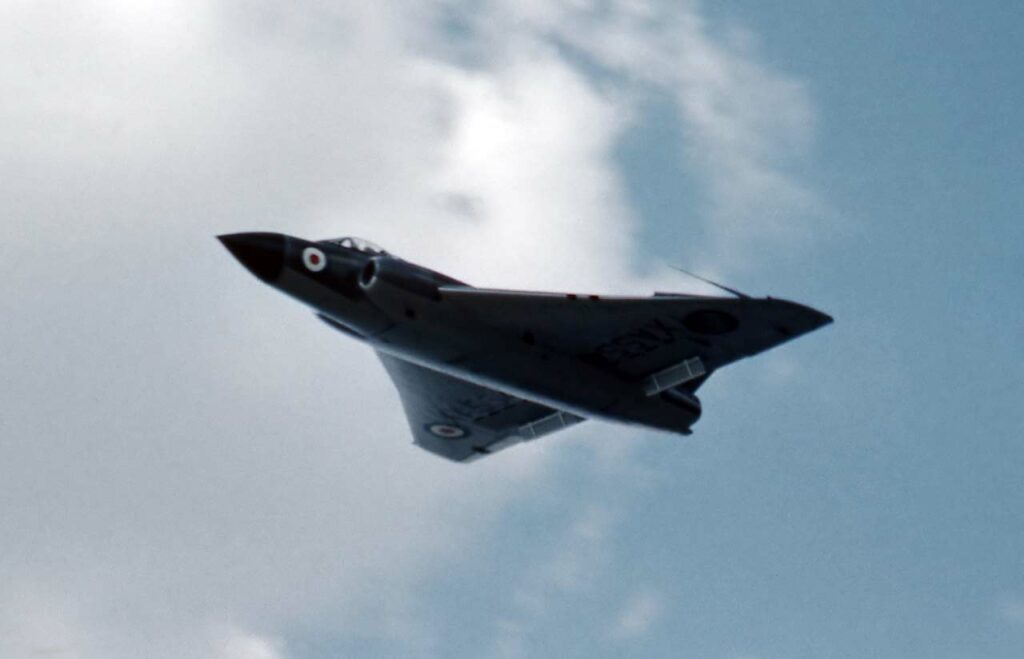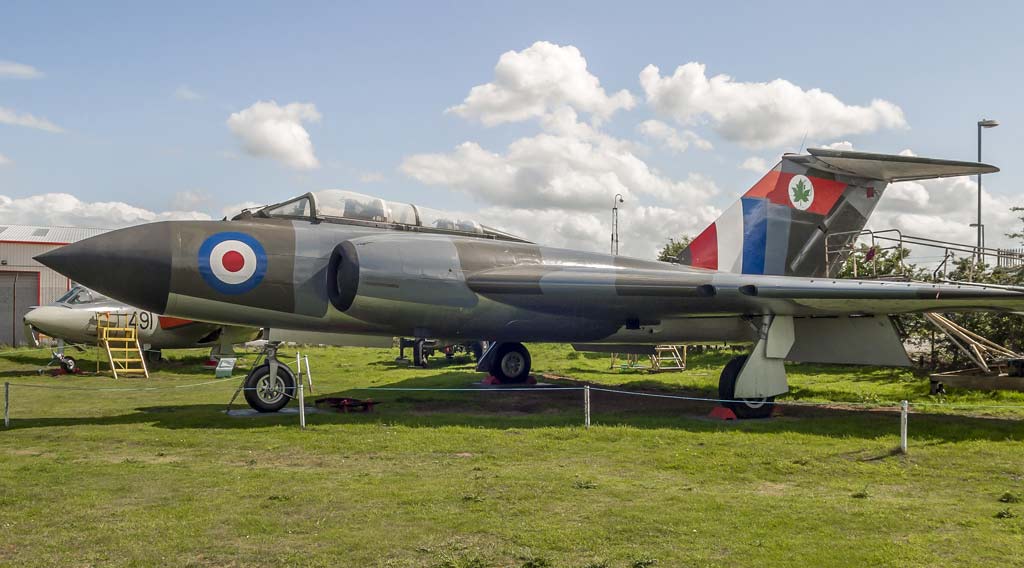The Gloster Javelin is a twin-engine, delta-winged, all-weather interceptor aircraft developed for the Royal Air Force.
In Brief
The Gloster Javelin, developed in the United Kingdom, is a twin-engine, all-weather interceptor aircraft with a delta-wing design. It was powered by two Armstrong Siddeley Sapphire turbojet engines, each producing 8,000 lb of thrust. The Javelin featured a service ceiling of 52,493 feet, a maximum speed of 709 mph, and a range of 951 miles. It had a wingspan of 52 feet and a length of 56.3 feet. The aircraft was armed with two 30mm cannons and, in later models, four Firestreak air-to-air missiles. Notable for its all-weather capability, the Javelin played a vital role in Britain’s air defense during the Cold War era.
The Gloster Javelin was Britain’s first purpose-built all-weather interceptor aircraft, playing a crucial role in the Royal Air Force’s air defense capabilities during the Cold War. It was notable for its delta-wing design and advanced radar systems.

History of the Development of the Gloster Javelin
The Gloster Javelin was developed in response to a British Air Ministry specification for a two-seat, all-weather fighter-interceptor capable of high-altitude and high-speed performance. The design process began in the late 1940s, with the aim of creating an aircraft that could counter the threat posed by Soviet bombers. The Javelin was designed with a delta wing to provide high-speed performance and stability, as well as a large tailplane for effective maneuverability at high altitudes.
The first prototype Javelin flew on 26 November 1951, and the aircraft underwent extensive testing and development to refine its performance and capabilities. The Javelin encountered various challenges during its development, including issues with engine performance, aerodynamic stability, and the integration of advanced radar and fire control systems. Despite these challenges, the Javelin entered service with the RAF in 1956.
Design of the Gloster Javelin
The Gloster Javelin featured a distinctive delta-wing design, with a wingspan of 15.85 meters and a length of 17.15 meters. The aircraft’s design incorporated advanced aerodynamic features, including its delta wing and large tailplane, which were necessary for effective maneuverability at high speeds and for controllability at low landing speeds.
Powered by two Armstrong Siddeley Sapphire turbojet engines, the Javelin had a maximum takeoff weight of approximately 14,324 kilograms. The aircraft’s delta-wing design housed fuel and armaments, while the engines and crew were located in the fuselage. The design also included features such as vortex generators on the wings to improve low-speed handling and a stall alarm system to warn pilots of impending stalls.
Performance of the Gloster Javelin
The Gloster Javelin’s performance was characterized by its high-speed and high-altitude capabilities. The twin Sapphire turbojet engines enabled a maximum speed of 709 mph and a service ceiling of 52,493 feet. The aircraft had a range of 951 miles and a rate of climb of 5,405 feet per minute.
Variants of the Gloster Javelin
The Gloster Javelin was produced in several variants, including the FAW.Mk 1 (initial production model), FAW.Mk 2 (uprated engines and improved radar), T.3 (dual-control trainer variant), FAW.Mk 4 (improved aerodynamic characteristics), FAW.Mk 5 (increased internal fuel capacity), FAW.Mk 6 (based on Mk 5 with an American-produced radar system), FAW.Mk 7 (fitted with Sapphire 203 engines and provision for air-to-air missiles), FAW.Mk 8 (afterburning powerplants), and FAW.Mk 9 (final production model variant with in-flight refueling probe).

Military use and combat of the Gloster Javelin
The Gloster Javelin was primarily used by the Royal Air Force as an all-weather interceptor. It was fielded by 14 squadrons and played a key role in guarding Britain against potential Soviet bomber fleets. The Javelin was capable of engaging other aircraft and had an air-to-air victory against an Indonesian C-130 during the Malayan crisis in 1964. The aircraft was replaced by the English Electric Lightning in the UK and Germany by 1965, but it continued to operate in the Far East for a few more years.
The Gloster Javelin, with its unique design and capabilities, played a pivotal role in the RAF’s air defense strategy during the Cold War. Its development and service history highlight the challenges and advancements in military aviation during this period. Despite its limitations, the Javelin was well-regarded by its pilots and made significant contributions to Britain’s air defense.
Back to the Fighter Jet section.